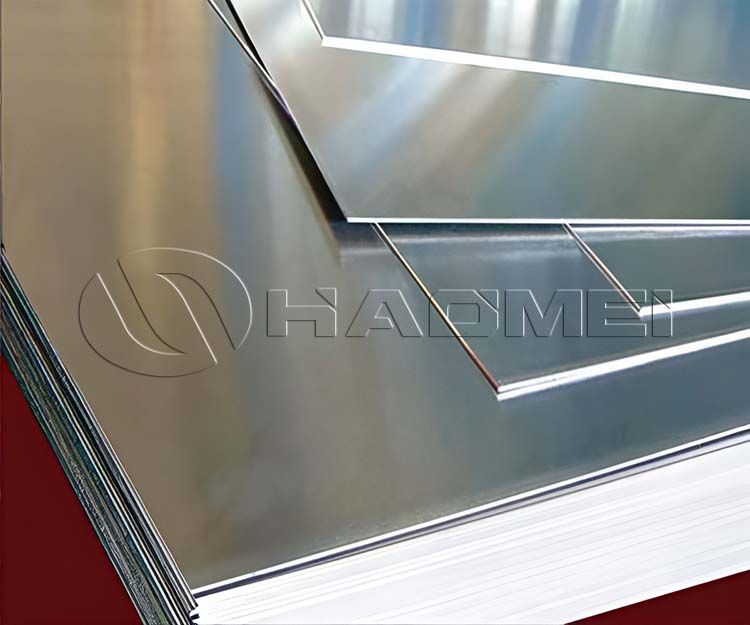Get in touch
-
Email:
sale@alumhm.com -
Tel/whatsapp:
+86-15978414719 -
Fax:
+86-0371-65621393 -
Address:
No.14 Waihuan Road, CBD, Zhengzhou, China -
Website:
https://www.aluminium-tanker-plate.com
5059 Aluminum Sheet for Tank Truck
As an important member of the aluminum-magnesium alloy family, aluminum 5059 has become the preferred material for modern tank truck manufacturing due to its high strength, excellent corrosion resistance and good welding performance. Its typical application scenarios include:
Hazardous chemical transport tank truck: Suitable for transporting highly corrosive liquids such as sulfuric acid and hydrochloric acid. Thanks to the synergistic effect of magnesium (5.25%) and zinc (0.21%) in 5059 alloy, it can resist long-term corrosion by acid and alkali media.

Liquefied Natural Gas (LNG) Tank Truck: In an ultra-low temperature environment of -196℃, the 5059-H116 plate can still maintain stable mechanical properties, meeting the stringent requirements of LNG tanks for material toughness.
Food-grade liquid transportation: It can directly contact edible oil, dairy products, etc. without additional coating, which meets FDA food contact safety standards.
Core requirements for 5059 aluminum plates in tank truck manufacturing
1. Balance between high strength and light weight
The tensile strength of 5059-H116 can reach 310-350MPa, the yield strength is about 240MPa, and the elongation is ≥15%. Compared with traditional carbon steel, it can reduce weight by more than 40%, while meeting the strength requirements of the tank structure. For example, a 45m³ tank truck can reduce its own weight by 5 tons by using 5059 aluminum plate, improving transportation efficiency.
2. Double guarantee of corrosion resistance
Intergranular corrosion protection: Through the optimization of heat treatment process, the β phase (Mg₂Al₃) precipitated at the grain boundary of 5059 alloy is intermittently distributed, avoiding the formation of continuous corrosion channels, and the intergranular corrosion sensitivity is significantly lower than that of 5083 alloy.
Salt spray test standard: It must pass ASTM B117 or GB/T 10125 standards, and spray continuously in 5% NaCl solution for more than 500 hours, and there is no obvious pitting or peeling on the surface.
3. Adaptability of welding process
5059 aluminum plate can be welded by MIG and TIG, the strength coefficient of the welded joint is ≥0.9, and the corrosion resistance of the weld area is equivalent to that of the parent material. It is recommended to use ER5356 welding wire, and the plate needs to be preheated to 60-80℃ before welding to reduce stress concentration.
Industry standards and certification system
5059 aluminium tanker plate must meet the following core standards:
Material standards
ASTM B928/B928M-07: Specifies the chemical composition (Al ≥ 93.5%, Mg 4.5-5.5%, Zn ≤ 0.25%) and mechanical properties of 5059 marine aluminum plates.
GB/T 3190-2020: China's chemical composition standard for deformed aluminum and aluminum alloys, in line with international standards.
Manufacturing process standards
ASME BPVC Section VIII: Pressure vessel manufacturing specifications, requiring the plate ultrasonic flaw detection (UT) pass rate ≥ 98%, and weld radiographic testing (RT) to meet Level II standards.
ADR 2023: European Agreement on the Transport of Dangerous Goods, which stipulates that the tank body must pass a 50kPa air pressure test and a hydraulic test of 1.5 times the design pressure.
Environmental adaptability standards
ISO 11613:2021: Liquefied petroleum gas tanker standard, requiring the plate to absorb energy ≥27J in a -40℃ impact test.
EN 12562:2020: Liquid transport tanker standard, requiring the salt spray test time to be ≥1000 hours and the surface corrosion rating to be ≤PC level.
